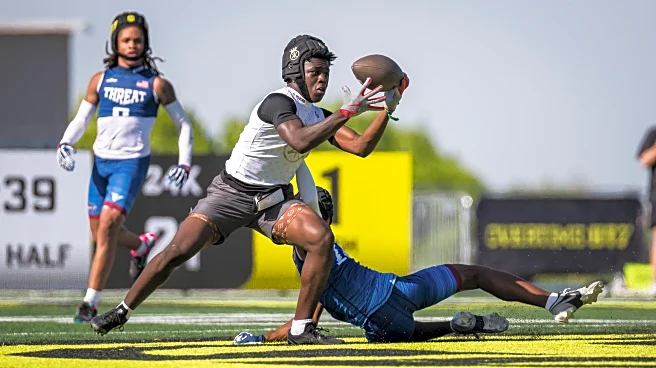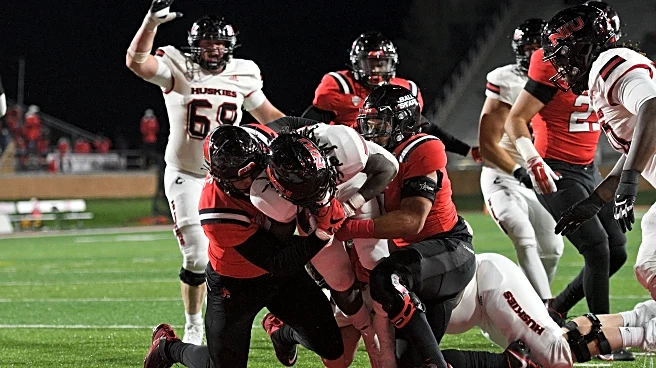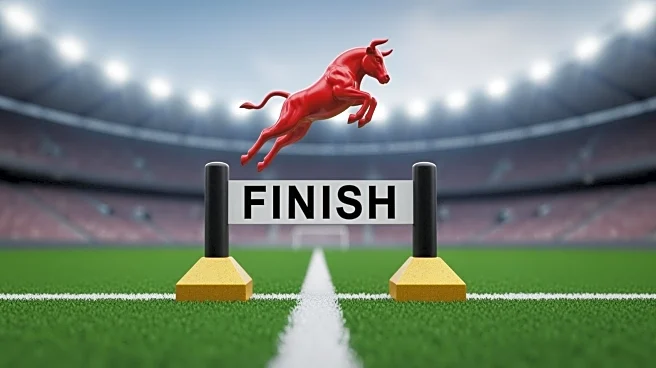What's Happening?
The Ironton Fighting Tigers, a high school football team in Ohio, are facing potential disqualification from the Ohio High School Athletic Association (OHSAA) playoffs due to alleged recruiting violations.
Despite finishing their regular season with a 9-1 record and securing a running clock win over Portsmouth, Ironton’s playoff fate hangs in the balance. The team, which has a history of success including five state championships, is under investigation for the eligibility of players who transferred from out of state. The OHSAA is set to release a press statement on Saturday morning to announce its decision, which could impact Ironton’s position as the No. 1 seed in Division V, Region 19.
Why It's Important?
The potential disqualification of Ironton from the playoffs could have significant implications for high school football in Ohio. It raises questions about the enforcement of transfer rules and procedures, particularly at private schools, and could lead to changes in how the OHSAA handles such cases. The decision will not only affect Ironton but also the broader playoff landscape, influencing which teams advance and how the competition unfolds. This situation highlights ongoing concerns about recruiting practices in high school sports and the need for clear regulations to ensure fair play.
What's Next?
The OHSAA’s decision will determine whether Ironton can participate in the upcoming playoffs, which are set to begin next week. If disqualified, Ironton may seek to challenge the ruling, potentially leading to legal or administrative actions. The outcome could prompt discussions among school boards and athletic associations about revising transfer policies and enforcement mechanisms. Stakeholders, including players, coaches, and fans, are closely watching the situation, as it could set a precedent for future cases involving alleged recruiting violations.
Beyond the Headlines
The controversy surrounding Ironton’s playoff eligibility underscores broader ethical and legal issues in high school sports. It highlights the tension between competitive success and adherence to rules, as well as the impact of recruiting practices on team dynamics and community relations. The case may lead to increased scrutiny of athletic programs and calls for transparency in player recruitment and eligibility processes.













